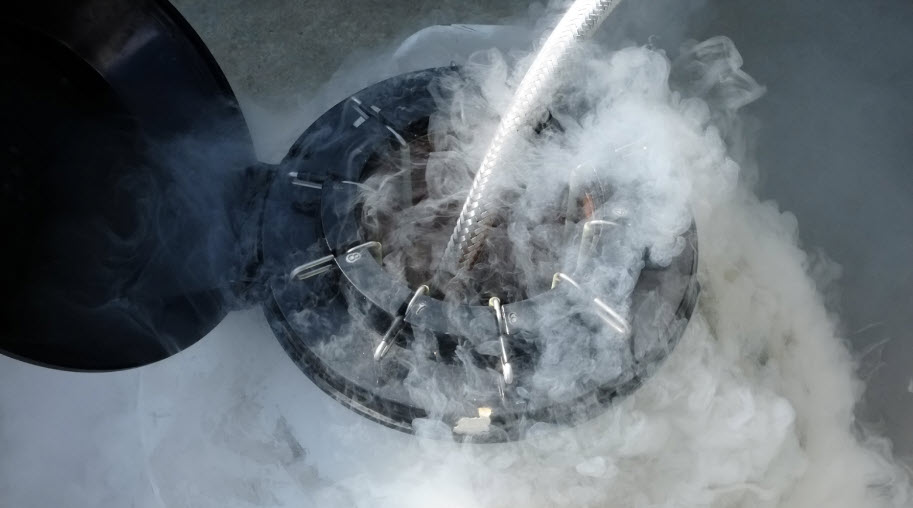Liquid Nitrogen Generators: What Are They and How Do They Work?

Nitrogen is an abundant gas in the atmosphere. In its liquid form, it is frequently used as a cryogenic refrigerant. The widespread availability of nitrogen means that large quantities of the gas can be easily obtained and utilized. In the last several decades, liquid nitrogen has become a critical element of modern human life, used in several applications across society — science in particular. However, the largest factor in obtaining liquid nitrogen is the price, which is often driven up due to transportation costs. There is a significant increase in transportation costs to rural areas that are difficult to access.
To resolve this issue, liquid nitrogen generators have been put on the market to manufacture liquid nitrogen near the locations where it is used and supply it to users who use only small quantities of it.
Investing in onsite liquid nitrogen generation means you can use what you need when you need it. You no longer have to worry about scheduling deliveries, managing supply, and dealing with ever-increasing nitrogen prices. In this article we discuss how liquid nitrogen generators work, key characteristics, overview some of the main applications, as well as the benefits of having an onsite generator.
What is a Liquid Nitrogen Generator?
Liquid nitrogen generators consist of a nitrogen gas generator that divides and extracts nitrogen gas from the oxygen molecules in the air. The generator has a cryocooler that is used for turning the nitrogen gas into a liquid by reducing its temperature to below its evaporation point (which is approximately -195.8 °C or -320 °F).
The main body of the liquid nitrogen generator has a cryocooler for liquefying nitrogen gas, a vacuum heat-insulated vessel to store the liquid nitrogen, a level gauge, safety devices, and a control system in it.
An optional function is available to automatically supply liquid nitrogen to the specified level in a vessel as well. This often saves time and effort for customers that need to regularly replenish their liquid nitrogen supply.
How Liquid Nitrogen Generators Work
A liquid nitrogen generator is a device that helps you procure your nitrogen supply onsite — an alternative to bulk delivery that has gained popularity over the past decade.
Nitrogen generators are powered by electricity. They pump ambient air and then separate nitrogen molecules from the oxygen molecules using either Nitrogen Membrane or Pressure Swing Adsorption (PSA) technologies. However, liquid nitrogen generators have a few more processes to convert nitrogen gas into a liquid.
Many liquid nitrogen generators are components of cryo plants, which typically also include a pre-treatment, a cryogenic, and a compressor/expander section. In a cryo plant’s liquid nitrogen generator, atmospheric air is pressurized by a compressor and then channeled into a buffer tank. From the buffer tank, this air is moved through a set of filters to remove impurities. Any remaining moisture is eliminated by an internal air dryer.
This treated air is further channeled towards a PSA unit, where a carbon sieve adsorbs oxygen and carbon monoxide molecules in an adsorption bed. Once this bed is saturated, the flow is switched to a second adsorption bed, and the first bed is purged. By constantly switching the flow between the two adsorption beds, pure nitrogen gas is obtained and then stored in a cryogenic storage vessel.
And as the technology continues to evolve, newer models of liquid nitrogen generators have been created. Some of the newest models have a minimal footprint, improved efficiency, and even sound isolation.
Main Applications of a Liquid Nitrogen Generator
Liquid nitrogen is commonly used as a cryogenic refrigerant. That’s because the nitrogen gas that it consists of 80% air, so a large quantity of liquid nitrogen can be easily manufactured and obtained. Also, nitrogen gas is inert and has a large thermal capacity which means it has a long retention time. Because of these facts, liquid nitrogen has become essential to our lifestyles. It used for several different applications and within a range of industries, including the following:
Freeze-preserving cells (tumor, white blood, lymphocytes, platelets, bone marrow)
Cryopreservation of biological samples (e.g. organs, tissues, human and animal semen, fertilized eggs)
Cryotherapy (e.g. removal of skin abnormalities)
Bacteria and virus manipulation
Superconductivity coolant
Livestock industries (cattle branding)
NMR spectrometers and MRI system
Controlled evaporation or very low-temperature reaction processes in chemistry
Sealing or capping bottles or containers
Freezing and transport of food products)
Cryogenic insulation in the oil industry (e.g. to freeze water and oil pipes when a valve is not available to block fluid flow to the work area)
Avant-garde and molecular cuisine or gastronomy (instant freezing, ice cream, liquid nitrogen cocktails “cauldron effect”, food experiments and preparation)
Cooking schools
Predictable Costs & Clear ROI
With liquid nitrogen prices ever-increasing, having an onsite liquid nitrogen generator is a significant advantage in your process control and could save you tons of money.
As a rule of thumb, a liquid nitrogen generator pays for itself within 6 to 18 months, depending on your usage, frequency, etc. And the lifespan of a liquid nitrogen generator can exceed ten years with minimal maintenance. An onsite liquid nitrogen generator can provide liquid nitrogen 24 hours a day without requiring user interaction. Using a liquid nitrogen generator offers a convenient and reliable supply with no loss or contamination frequently experienced through delivered supplies.
Want to learn more about liquid nitrogen generators and their impact on your process control? Give us a call at 1.800.333.7519 or contact us online to speak with an ACI representative today.

